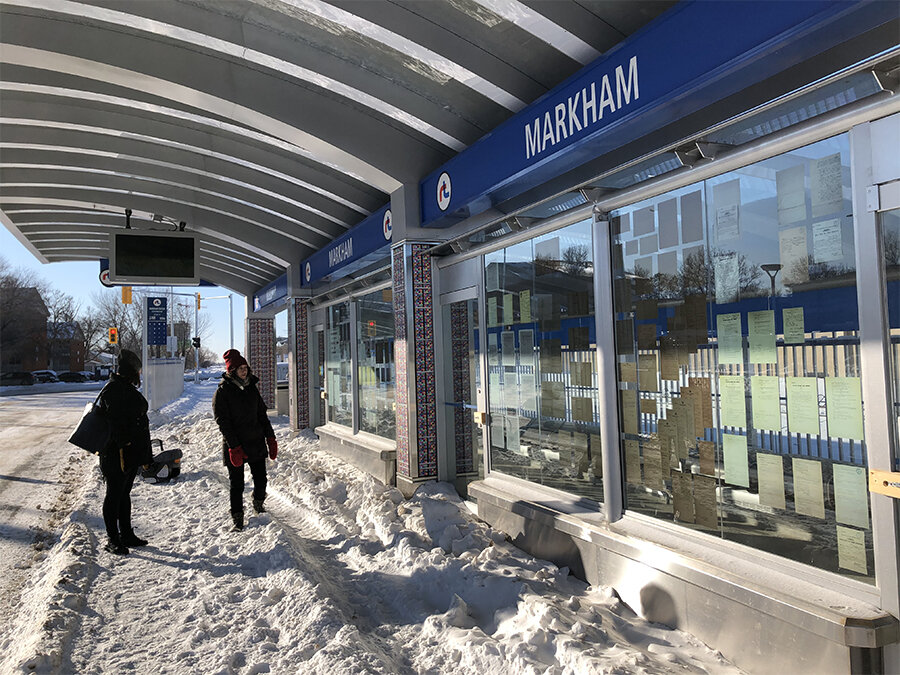Use and Occupancy artwork (looking west)
Reference Image: Seasonal Activities of the Red River M.tis. ca 1870. Historic Atlas of Canada, vol 2, plate 1. Authors: Barry Kayne, D Wayne Moodie, and DN Sprague
Use and Occupancy artwork - Upper and Lower Fort Gary markers
Use and Occupancy artwork - Portage la Prairie Marker
Use and Occupancy artwork - Pembina Post
Scrip
Scrip
Métis Land Use
2019
concrete, metal, chrome, glass, hardware
various
Markham Transit Station, Winnipeg, MB
Use and Occupancy
(Markers and Concrete Linework)
This work explores the efforts of Métis people related to land rights. Métis people are often defined by their mobility and family relations. The project utilizes a map that identifies how Métis people travelled, traded and occupied the territory surrounding the Red River around 1870, when territories such as Rupert’s Land are being transferred to Canada. This is done by creating five tall markers to represent the fort locations within the Red River as indicated on the map. In the side walk surrounding the markers there is painted linework that indicates pathways related to harvesting hay, berry picking, hunting, sugaring, red river cart trails and so on. The markers in combination with the concrete linework discuss the longstanding use and occupancy of the Métis people within the Red River area particular to the time period of the referenced map – which also discussed how Métis people continue the tradition of moving about the land through time in memoriam.
Scrip
(Digitally printed ceramic fritting on glass)
The second part of the project displays Métis scrip applications and coupons on the front facing glass panels of the bus stations at Markham Transit Station. Many of the family names identified in the project were found through a public art call (a community engagement effort) to Métis people throughout the Métis homeland which discusses a critical chapter in how land rights were given to Métis people after 1885. This part of Métis history also discusses the Governments advancement of extinguishing our Aboriginal Title. The Métis Archival Project (MAP Lab) with the assistance of Frank Tough and Sandy Hoye provided most of the high resolution images. This portion of the project was a truly collaborative effort in order to visually display the complex effort of the scrip process available to Métis people – “Clearly, this system did not create a collective land base for the Métis. For decades, the failed relationship between Métis people and the Government of Canada was symbolized by the scrip system. Today, some believe that the main problem of the grants to the Métis after 1870 was a delay in implementation by the federal government, while others can point to dispossession achieved by sharp dealings, impersonation, and fraud.” – Frank Tough







